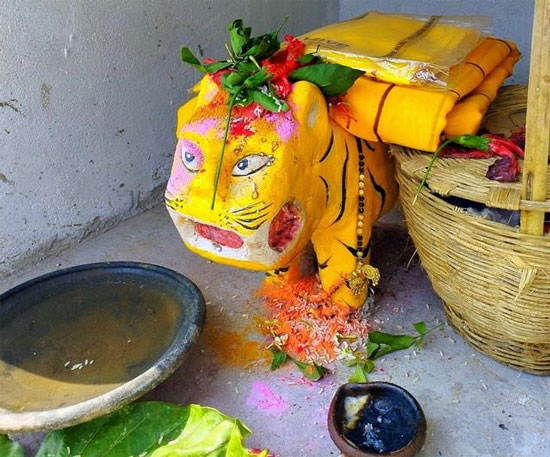Daijiworld Media Network – Keri
Keri, Oct 21: Tribal communities in Goa, including Gauda, Kunbi, Velip, and Dhangar, continue to worship tigers as forest protectors through traditional rituals during Diwali. Sacred groves, shrines, and natural caves serve as focal points for ceremonies seeking the deity’s protection.
In Kaley, Sanguem, the Velip community maintains the sacred grove Vaghrya gal, performing annual rituals at a stone tiger sculpture. In Cazur village, Quepem, Velip women perform the Dhillo folk dance and invoke Vaghro through songs at the Chichepann sacred grove.

Elder Bhik Paik Velip recalled that accidental tiger deaths were commemorated with fairs and rituals at Vaghamol, highlighting ancestral respect for the animal. Other shrines, such as in Gaondongarim, Canacona, and Ambaulim, Quepem, feature stone tiger sculptures and offerings like Mhatan during annual ceremonies.
Villagers in Colamb-Rivona, Sanguem, perform rituals on Vaghrya amaas (new moon night) to protect families and cattle, preserving beliefs despite past threats from mining. Folk dramas like Bharnul depict tiger worship narratives, emphasizing reconciliation with the deity’s spirit.
These centuries-old traditions, spanning dances, songs, food offerings, and dramatic performances, showcase the deep bond between Goa’s tribal communities and wildlife, preserving both cultural heritage and ecological awareness.